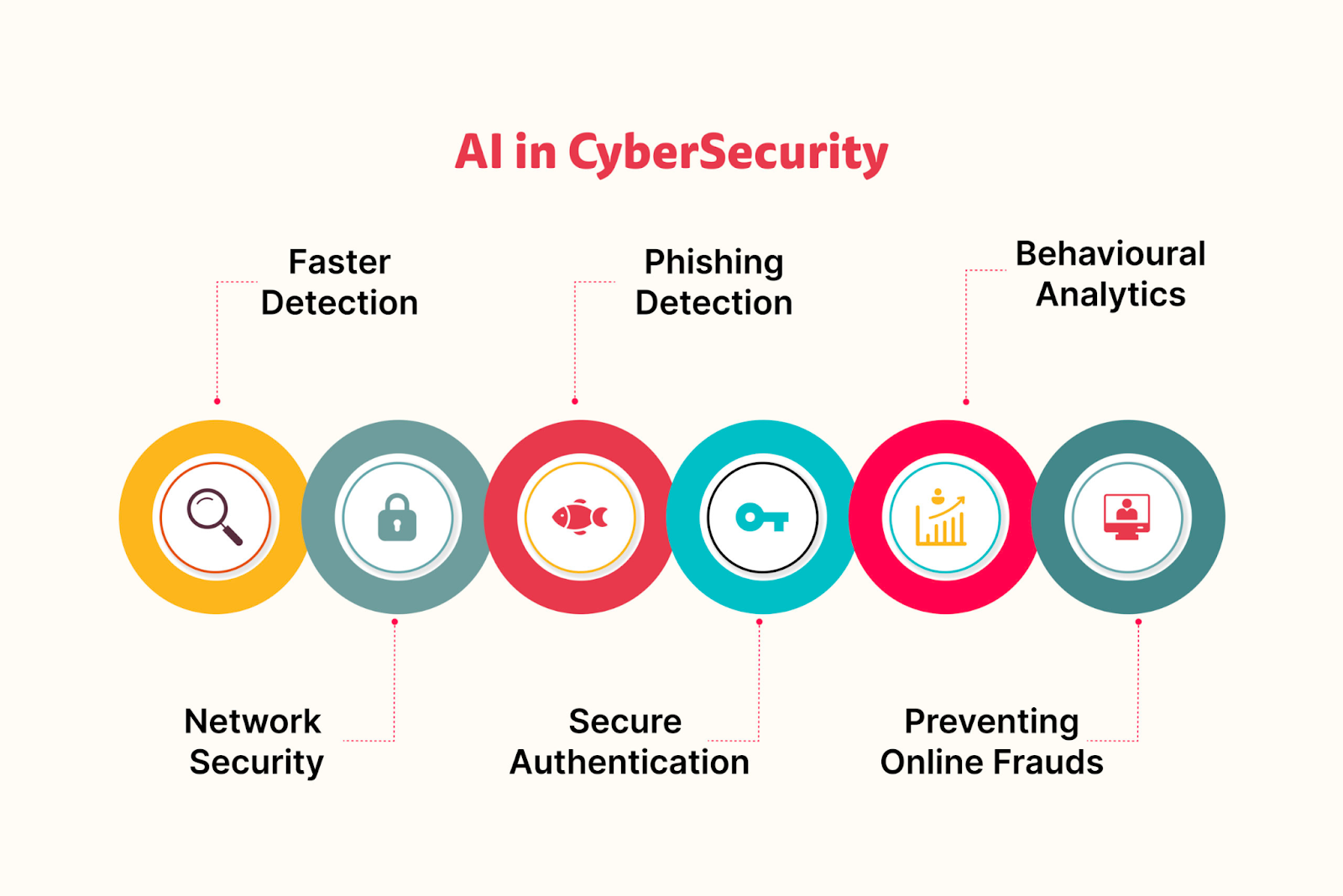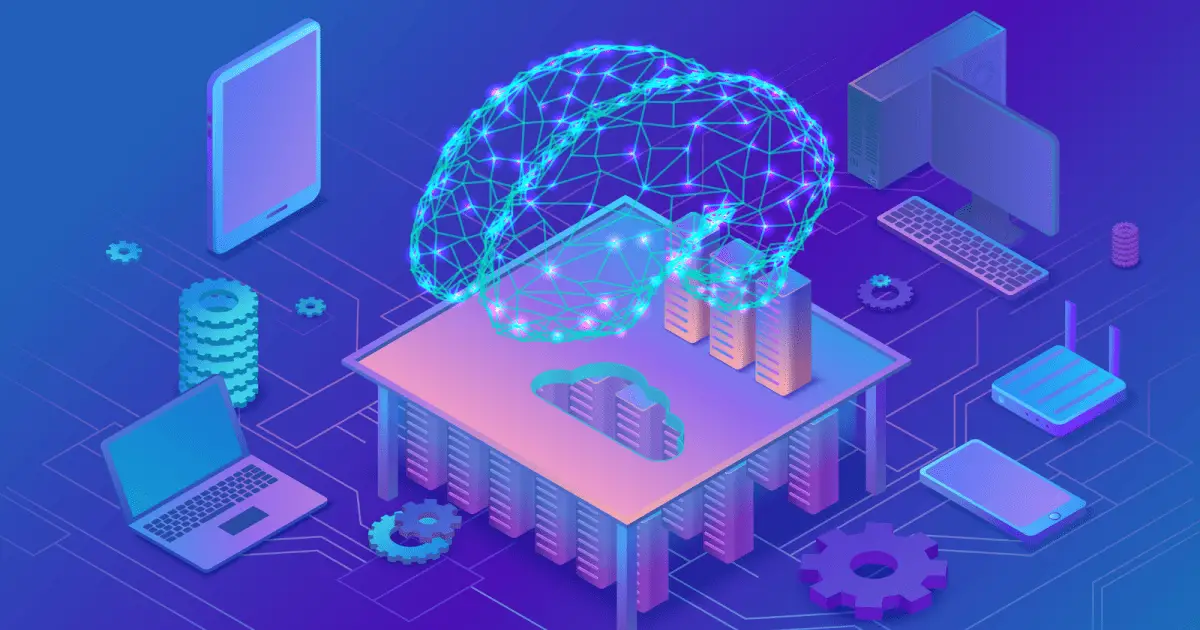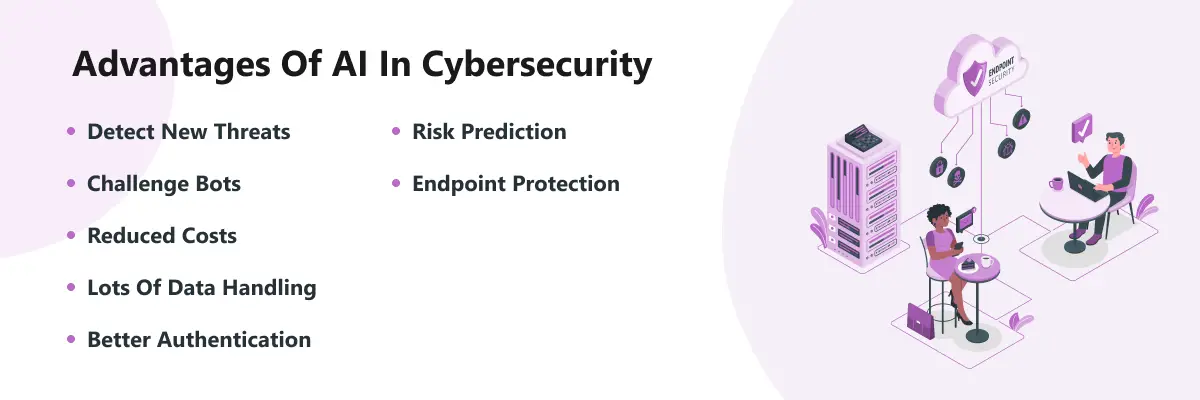Artificial intelligence (AI) has emerged as a powerful tool in enhancing online security, offering numerous benefits that help protect individuals, businesses, and organizations from cyber threats. Let’s delve into the significant role of AI in improving online security:

-
Threat Detection and Response: AI-powered security systems continuously monitor networks and data for anomalous activities, enabling the early detection of potential threats. Advanced algorithms analyze large volumes of data, including network traffic, user behavior, and system logs, to identify suspicious patterns that might indicate a cyberattack. This proactive approach helps organizations respond swiftly to security incidents, minimizing the impact and potential damage.

-
Fraud Detection and Prevention: AI plays a crucial role in combating online fraud by analyzing transaction patterns and identifying anomalies that deviate from normal behavior. Machine learning algorithms learn from historical data to detect fraudulent activities, such as unauthorized account access, identity theft, and payment fraud. By correlating data from multiple sources, AI systems can accurately flag suspicious transactions for further investigation and intervention.

-
Malware and Phishing Attack Protection: AI algorithms analyze vast amounts of data to recognize and classify malicious software (malware) and phishing attacks. Using deep learning techniques, AI systems can accurately detect zero-day attacks and previously unknown malware variants. Moreover, AI-powered email security solutions leverage natural language processing (NLP) to identify phishing emails by analyzing linguistic patterns and content consistency.
-
Vulnerability Assessment and Patch Management: AI automates the process of vulnerability assessment and patch management, enabling organizations to identify and prioritize vulnerabilities that pose the highest security risks. AI algorithms analyze system configurations, software updates, and security logs to detect known vulnerabilities and missing patches. By automating these tasks, organizations can promptly apply security patches and mitigate vulnerabilities to prevent exploitation by attackers.
-
Security Automation and Orchestration: AI-powered security automation and orchestration (SAO) platforms streamline and enhance security operations. SAO solutions utilize AI algorithms to automate routine security tasks, such as incident response, threat containment, and log analysis. By automating repetitive and time-consuming tasks, AI enables security teams to focus on more strategic and complex security issues, improving overall security posture.
-
Behavioral Analytics and User Profiling: AI algorithms analyze user behavior patterns to establish individual baselines. By monitoring deviations from these baselines, AI-based security systems can detect anomalous activities that may indicate compromised accounts or insider threats. Behavioral analytics help organizations identify and respond to suspicious activities promptly, preventing unauthorized access and data breaches.
Overall, the role of AI in enhancing online security is multifaceted and far-reaching. AI algorithms provide organizations with powerful tools for threat detection, fraud prevention, malware protection, and vulnerability assessment. By automating security tasks and enabling proactive security measures, AI contributes significantly to creating a safer and more secure online environment.# The Role Of AI In Enhancing Online Security
Executive Summary
Artificial Intelligence (AI) is rapidly revolutionizing various industries, and the online security domain is no exception. AI’s sophisticated capabilities, from data analysis to pattern recognition and predictive analytics, are transforming how we approach cybersecurity. This article explores how AI is revolutionizing online security, using real-world examples to illustrate its effectiveness in protecting against cyber threats. It discusses the following key subtopics:
- Threat Detection and Prevention: AI’s ability to analyze vast amounts of data in real time makes it highly effective in detecting and preventing security breaches.
- Malware and Phishing Protection: AI’s algorithms can identify and block malicious software and phishing attempts with greater accuracy and speed than traditional methods.
- Vulnerability Assessment and Remediation: By continually analyzing infrastructure for vulnerabilities, AI helps organizations stay ahead of potential attacks and reduce exploitable gaps.
- Behavioral Analytics for Security: AI can analyze user behavior patterns to detect anomalous activities that may indicate a security breach or insider threat.
- Secure Automation and Orchestration: AI can automate security tasks, enabling organizations to respond to security incidents more efficiently and effectively.
Understanding and adopting these AI-driven security solutions can significantly enhance an organization’s ability to protect its digital assets and sensitive information.
Introduction
As the interconnectedness of our digital world expands, so does the sophistication of cyber threats. Traditional security measures often fall short in defending against these evolving threats. Artificial Intelligence (AI) is emerging as a powerful ally in the fight against cybercrime, offering a range of capabilities that can revolutionize our approach to online security. In this article, we’ll delve into the crucial role AI plays across various security domains, empowering organizations with enhanced protection against cyberattacks.
Threat Detection and Prevention
AI’s ability to analyze enormous volumes of data in real time offers significant advantages for threat detection and prevention. AI-powered systems can monitor network traffic, user activities, and system logs to identify patterns and anomalies indicative of potential attacks. Machine learning algorithms learn from historical data and improve their accuracy over time, providing more precise threat detection.
- Real-time Analysis: AI systems analyze data in real time, enabling organizations to respond to emerging threats promptly.
- Pattern Recognition: AI algorithms detect unusual patterns in network behavior, user activities, and system logs, flagging potential threats.
- Predictive Analytics: Machine learning algorithms analyze historical data to predict future attacks, allowing organizations to take preemptive measures.
- Adaptive Defense: AI-powered systems learn and adapt over time, improving their ability to detect and prevent new and emerging threats.
Malware and Phishing Protection
AI has proven effective in combating malware and phishing attempts, two prevalent methods of cyberattacks. AI algorithms can analyze email content, attachments, and website URLs to identify malicious patterns and characteristics associated with these threats.
- Content Filtering: AI systems scan email content and attachments in real time, flagging suspicious elements indicative of malware or phishing.
- URL Analysis: AI-powered systems analyze website URLs to detect fraudulent or malicious websites, preventing users from accessing dangerous content.
- Behavioral Analysis: AI algorithms monitor user behavior patterns to identify suspicious activities, such as downloading unknown files or visiting malicious websites.
- Sandboxing: AI systems employ sandboxing techniques to execute suspicious files in a controlled environment, preventing damage to the actual system.
Vulnerability Assessment and Remediation
AI’s continuous analysis of an organization’s infrastructure for vulnerabilities is crucial for staying ahead of potential attacks. AI-driven systems can identify and prioritize vulnerabilities, providing organizations with a clear roadmap for remediation.
- Continuous Scanning: AI-powered systems continuously scan an organization’s network, systems, and applications to identify vulnerabilities and configuration issues.
- Prioritization: Algorithms analyze the severity and potential impact of vulnerabilities, prioritizing those that require immediate attention.
- Recommended Remediation: AI systems can provide recommendations for remediation actions based on best practices and industry standards.
- Automated Patch Management: AI can automate the process of applying security patches, ensuring that systems are updated with the latest security fixes.
Behavioral Analytics for Security
AI’s ability to analyze user behavior patterns has opened new possibilities for detecting security breaches and insider threats. By establishing a baseline of normal user behavior, AI algorithms can identify deviations that may signify malicious activity.
- User Profiling: AI systems create profiles of users based on their typical behavior, including login patterns, file access, and system interactions.
- Activity Monitoring: AI algorithms continuously monitor user activities, flagging anomalous behavior that deviates from established patterns.
- Insider Threat Detection: AI can identify unusual activities by authorized users that may indicate malicious intent or compromised accounts.
- Adaptive Baselines: Behavioral analytics systems can adjust user profiles and baselines over time to accommodate legitimate changes in user behavior.
Secure Automation and Orchestration
AI’s role extends beyond threat detection and prevention to include the automation of various security tasks. This automation enables organizations to respond to security incidents more efficiently and effectively.
- Security Orchestration: AI automates the coordination of security tools and processes, enabling faster and more effective incident response.
- Incident Investigation: AI algorithms can analyze incident data to identify the root cause and provide recommendations for remediation.
- Automated Threat Intelligence Sharing: AI-driven systems can share threat intelligence across an organization and with external parties, enhancing the overall security posture.
- Regulatory Compliance: AI can assist organizations in meeting regulatory compliance requirements by automating the monitoring and reporting of security events.
Conclusion
The integration of AI into online security strategies has transformed how organizations protect their digital assets and sensitive information. AI’s ability to analyze vast data volumes in real time, detect threats with greater accuracy, and automate security processes has revolutionized our approach to cybersecurity. By embracing AI-driven security solutions, organizations can significantly enhance their ability to resist cyberattacks, protect their reputation, and maintain business continuity in an increasingly dangerous digital landscape.
Keyword Phrase Tags:
- Artificial Intelligence (AI) in Online Security
- AI-powered Threat Detection and Prevention
- AI for Malware and Phishing Protection
- AI-driven Vulnerability Assessment and Remediation
- AI-based Behavioral Analytics for Security

This paper provides valuable insights into the crucial role AI plays in bolstering the security landscape of the online world. The detailed analysis and case studies effectively showcase the potential of AI to safeguard our digital interactions.
While the concept of AI enhancing online security is compelling, the examples cited in the article appear to be somewhat limited. A more comprehensive exploration of real-world applications and scalability concerns would have strengthened the argument.
I found the section on AI-powered threat detection particularly informative. It would be helpful to expand on the techniques employed for anomaly detection and behavioral analysis. Additionally, insights into the challenges and limitations of these methods would be valuable.
The author’s assertion that AI is the ultimate solution to online security is somewhat debatable. While AI has its advantages, it’s important to acknowledge that it can also introduce new vulnerabilities. A more balanced perspective would have been more convincing.
Oh, AI will save us from all our online woes, will it? Haven’t we heard this song before? Let’s not get carried away by hype. Let’s focus on practical solutions that don’t rely on magic wands.
I can’t wait for my AI security guard to tell me which cat videos are safe to watch. Maybe it can even help me avoid those annoying phishing emails by teaching me to spot the ones that say ‘kindly click on the link.’
This article highlights the immense potential of AI in revolutionizing online security. I’m eager to see how AI-driven solutions continue to evolve and contribute to a safer cyber environment.
While the benefits of AI for security are undeniable, we need to carefully consider the privacy implications. The massive data collection and analysis required by AI systems raise concerns about potential surveillance and misuse.
The integration of AI into online security is a double-edged sword. While it offers great promise, the potential for unintended consequences and the need for robust oversight cannot be overlooked.
The article provides a thorough overview of the role of AI in enhancing online security. However, it could benefit from a deeper dive into emerging threats and the corresponding AI countermeasures being developed.
AI is just a buzzword that gets thrown around a lot these days. I’m not convinced that it’s anything more than a glorified algorithm. Let’s not get carried away by hype and focus on proven cybersecurity practices.
The article raises important questions about the vast amounts of data required to train AI security systems. How do we ensure data quality, diversity, and inclusiveness to avoid biases and blind spots?
AI is a game-changer for online security. By leveraging AI, we can automate threat detection, identify zero-day vulnerabilities, and respond to incidents with unprecedented speed and accuracy. The future of cybersecurity looks bright indeed!